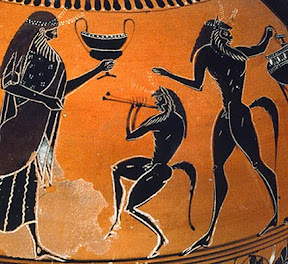Wednesday, July 30, 2025
Wellgarth
Wednesday, July 23, 2025
Torlandic Topology
So this is probably the single nerdiest thing I've ever done.
The setting for The Saga of the Ortegids, extrapolating from the worldbuilding details we get in the first three Dragon Quest games, is a hollow planet, with Erdland (the world map of Dragon Quest III) on the outside, and Torland (that of Dragon Quest II, which includes that of I) on the inside. Thinking about how both 3 and 2 feature an area where you can obtain a leaf of the Worldtree, I began to ponder how exactly the maps would line up if modeled on a three-dimensional sphere.
So I got a free trial of SketchUp and did exactly that. Look under the cut for more.
Monday, July 21, 2025
The Southern Archipelago
 |
| Art by DylanvdLinde |
- Zahan: The easternmost of the islands, home to a village where all able-bodied men live as fishermen. They are often away at sea, leaving the village populated by their wives, children, and elders. There is also a wizard who lives here. His mansion is warded by traps, but he is in the possession of a loom that can be used to weave a robe from water, giving the wearer protection against fire.
- The island directly west of Zahan has a shrine with a portal that links to the castle in Midenhall. This is one of a few teleportation shrines in the game, serving as a fast travel system.
- The Shrine of Fire is located on an island to the northwest of Zahan. There are portals here that lead to shrines near Lianport, Beran, and Alefgard. These portal shrines are quite similar in function to the ancient Aliahanian ruins from Dragon Quest III, but it's unlikely that they were created by the Aliahanian Empire, as all those portals are restricted to Erdland. If the Aliahanians settled in Torland, you would think they would build at least one portal to there, given that the inner world is otherwise very difficult to access. It's possible, however, that these portals have been lost to time. Alternatively, there could have been a similar world-spanning empire in Torland that built portals to link their colonies, or they could have built by the Ortegid Empire under Aleph Wyrmbeorn, considering that one of these portals is in his capital.
- On the island just east of the mainland, surrounded by mountains and desert (or perhaps, like Empress Castle, this should be interpreted to be a high mountain), there is a grove where a leaf of the Worldtree can be obtained. This can cure people of curses and ailments. I tried to line up the maps of Erdland and Torland, but if we assume that the Pit of Giaga is directly above Tantegel (as that's where it spits you out in DQ3), then this island would be beneath either Suland or Baharata, not the Worldforest, where a similar secret exists in 3. However, it's possible this leaf could come from an offshoot of the Worldtree's roots that extends further east.
 |
| Art by Einar Martinsen |
- Not shown on the map, but included for completion, is a mountainous island (or, again, another mountain) midway between the southern continent and Dirkandor. At low tide, the island is surrounded by shoals that make it inaccessible, but when the tide rises, ships can sail into a cave on the south shore. Note that in the game, you need to use a fragment of the moon to alter the tides - as Torland is the inside of a hollow world presumably with no moon, this may be the only way to affect the tides. This cave is the site of a hideout of the Children of Hargon, a cult devoted to Malroth, the god of chaos and destruction - they likely chose the location as it's difficult to access, thus making it hard for the authorities to track them here.
Friday, July 18, 2025
Friday Encounter: Drinking with Satyrs
Wednesday, July 16, 2025
Dirkandor
Dirkandor is a large island to the south of Lorasia. The only site of interest we see in-game is the capital city, which I am calling Osterfair after the name used for the location in the original English NES release. The dominant feature of Osterfair is its large colosseum, where the King has a box to observe the games. The game refers to this as both a colosseum and a castle, but there don't appear to be any living quarters or rooms besides the arena depicted. If we assume this design is merely a matter of gameplay convenience, the King's personal residence must be elsewhere, though it's possible that he has a palace connected to the arena, as several Roman emperors did with the Circus Maximus.
 |
| Art by Travis Lacey |
We don't see much of Dirkandor beyond its capital, but there are some inferences that can be made from the geography. The island is surrounded by high cliffs and rocky shoals, and the only safe entrance is through a central bay. It's not exactly the most appealing location for trade, even with the lands of the former Ortegid Empire to the north. Considering the island's size, the kingdom probably grows enough of its own food to sustain itself. Combine this with the fact the people are bloodthirsty enough for their main claim to fame to be an arena, and I can see a martial culture taking hold in Dirkandor. The rough terrain and isolation could give rise to a spartan ethic where the people are used to relative scarcity, and this tempers their attitudes toward pursuing strength in battle and succeeding by exerting power over others in their way. The strong are the ones who can claim the resources for themselves.
In fact, I'd like to note that Dirkandor's terrain makes it very defensible. The harbor is the only reliable entrance, and even from there the route to the capital is blocked by mountains. If we assume that northeast Torland was once the domain of sea raiders, I can see Dirkandor being a natural citadel from which raids could be launched without fear of retribution. The first kings of Dirkandor were likely powerful jarls lucky enough to claim the territory as their own and exert their power from there. If they were used to a life of fighting and raiding, and if this was a mark of status for them, this could well explain where their martial culture came from.
Monday, July 14, 2025
Lianport
 |
| Art by Jihyun Kim |
 |
| Art by Marc Mons |
Wednesday, July 9, 2025
The Ortegid Empire
.jpg) |
| Art by Peter Jackson (Still not that one) |
- Midenhall: The capital. There is a portal located in the castle that links to the island of Zahan, which may indicate a previous alliance, or perhaps the castle is built on ruins that once housed a network similar to that of Old Aliahan.
- Leftwyne: A town located on the border between Lorasia and Samartoria. Likely a strategic chokepoint, a trading post, or both.
- An oracle lives on an island in the northeast bay.
- Cannock: The capital.
- The Spring of Bravery: An underground wellspring located northeast of Cannock, guarded by a hermit. It is a sacred location that travelers go to purify themselves in before making a journey.
- An abandoned silver mine on an island in a lake to the west.
- Moonbrooke: The eponymous capital. Was destroyed by forces from Rhone, which kicks off the events of DQ2.
- Hamlin: A city located on the river northeast of Moonbrooke. Likely an important port due to its sea access. Holds a lottery.
- The Tower of Winds: A ruined tower in the southeastern mountains. A cloak that allows the wearer to glide and survive long falls can be found here.
Friday, July 4, 2025
Friday Encounter: Powder Keg
While on the road, the PCs come upon an abandoned cart on the side of the road, carrying a large barrel filled with a fine black dust with a strong sulfurous odor. A DC 10 Arcana or Nature check will determine that the barrel is full of gunpowder; a character who has served in a military setting in which gunpowder weapons were used will know this automatically. The barrel was being transported to a military camp to refuel their cannon, but was lost along the way, and now sits unclaimed. If you're concerned that the players might think the army will return to the barrel in the immediate future, you can put some skeletons dressed in armor around the cart, making it clear that whoever was guarding it have long been slain.
The idea here is to leave the PCs with a large explosive device on their hands - a setup ripe for mayhem, as many a DM would know. There are many situations an adventurer might get into where having access to an improvised bomb is an appealing thought. However, there are a number of logistical difficulties to this as well. The barrel weighs 80 pounds and must be transported by a horse or other Large-sized creature, or by two Medium-sized creatures pulling the cart. It's also quite cumbersome and may be hard to get through narrow passages, though enterprising players might see potential in rolling it down hallways, ramps, or staircases.
If a fuse is attached to the barrel and lit, it will explode in one round. Any creature in a 20-foot radius of the barrel must make a DC 12 Dexterity saving throw or take 8d8 fire damage, taking half damage on a failed save. The explosion could also be used to blast through rocks, potentially bypassing obstacles or creating an avalanche.
Alternatively, this much gunpowder would draw a substantial price at any marketplace. The barrel can be sold for 3000 GP, or 5000 GP to a particularly invested buyer, such as an alchemist or a rival commander (be they a bandit or a leader of another army). However, if the PCs go around toting a large barrel of gunpowder everywhere, they may attract suspicion, and the army that owned it in the first place may want it back. If the PCs sold it to a rival power, that might land them in even bigger trouble. And if something could kill even an army detachment with a barrel of gunpowder on their hands, that could pose a problem if it's still in the area...
Thursday, July 3, 2025
Charlock
 |
| Art by JamesRPGArt |
 |
| Art by Gustavo Cabral |

















